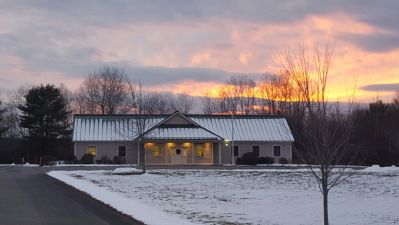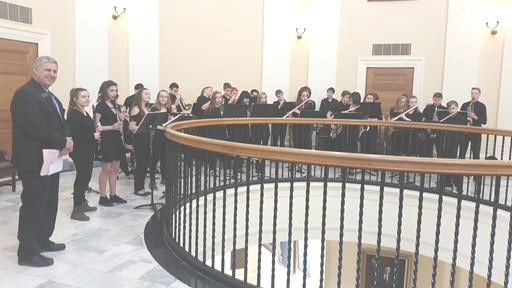ALICE J. MAHEUX
WINDSOR––Alice J. Maheux, 87, of the Bean road, died Sunday, April 15, 2018, at Country Manor Nursing Home, in Whitefield, following an extended illness. She was born in Sidney on June 4, 1930, the daughter of William Hughes and Margaret (Sawtelle) Hughes.
Prior to her retirement, Mrs.. Maheux was employed by Bates Manufacturing Co. for 40 years.
She was predeceased by her parents; three brothers: Robert, Myron and Phillip Hughes; and sister Phyllis Tremblay.
Surviving are four daughters: Elaine M. Chase and Betty Bowden, both of Vassalboro, Rita Dyer, of Waterboro, and Barbara A. Maheux, of Springvale; 13 grandchildren, one great-granddaughter; several nieces and nephews; one sister, Arlene Fossett, of Augusta.
Arrangements were entrusted to Plummer Funeral Home, 983 Ridge Road, Windsor. Condolences, photos and memories may be shared at www.plummerfh.com.
Memorial donations may be made to Alzheimer’s Association Maine Chapter, 383 U.S. Route 1, Suite 2C, Scarborough ME 04074.
RANDOLPH V. PAMPHREY
FAIRFIELD––Randolph Von Pamphrey, 51, passed away on Thursday, April 19, 2018, following a brief illness. Randy was born in Waterville, on December 7, 1966, to Pamela (Libby) and Larry Pamphrey.
He attended school in Leeds, Clinton, and Fairfield; graduated from Lawrence High School in 1985 and attended the University Southern Maine for one year. While at Lawrence, Randy was well-known for his athletic achievements in football, basketball, baseball and track.
Randy worked in many trades over the years, such as landscaping, dock building, and photography. Widely known for his ability to catch a beautiful moment or emotion on film, Randy used his skill in photography to bring joy to so many. It’s what kept him connected to the community, his friends, family and the spirit of LHS. Randy’s creative nature was also found in his interest in collections, gardening and cooking. He had a keen eye for antiques, unusual trinkets and rocks, and had his father’s skill in gardening which led to an interest in cooking.
Friendships came easy to Randy. Everyone who knew him considered him a friend; he was generous, kind-hearted, and honest. Never one to say a negative thing about another person, Randy was easy to trust and confide in. Randy earned his black belt in karate from Huard’s in Winslow.
Randy is survived by his mother, Pamela (Libby) Pamphrey; father, Larry Pamphrey; son, Derek Pamphrey, of Fairfield; sister, Libbi Pamphrey, of South Portland; sister, Heather Wilson and husband Dan, of Fairfield; brother, Kenneth Pamphrey, of Fairfield; nephew, Jake Wilson and wife, Jessica, of Benton; nieces, Samantha and Summer, of Fairfield; many cousins, aunts, and uncles.
An online guestbook may be signed and memories shared at www.lawrybrothers.com.
FRED J. HEWES
FAIRFIELD––Fred J. Hewes, 85, of Horn Hill Road, died Monday, February 26, 2018, at the Alfond Center for Health, in Augusta. He was born in Bangor on January 29, 1933, the son of Bert and Pauline (Jordan) Hewes.
Fred attended Skills in Pittsfield and had many friends at DHHS. He resided with Joann Morin and her husband Arthur Withee, and their family for over 20 years.
JOHN CALVIN DANCER
SOMERVILLE––Pastor John Calvin Dancer, 70, of Somerville, passed away Monday, April 2, 2018, at his home. Born March 8, 1948, in Gardiner, he was the son of John L. and Helen Brawn Dancer.
John attended Glen Cove Christian Academy, graduating in 1967. Following high school, John married his long-time sweetheart, Donna Roberts, May 15, 1970, in Carmel, New York. Attending Northeastern Bible College in Essex Fells, New Jersey, John Earned a bachelor of arts in Bible and later a theology degree.
For many years, Pastor Dancer filled pulpits along the East Coast and for over 32 years served at South Somerville Baptist Church.
John’s greatest joy in life was his family. He loved nothing more than spending time with them, especially camping trips and working around the house. He enjoyed gardening and was an avid reader.
He was predeceased by his father; and sister, Janey Dancer.
John is survived by mother, Helen Dancer, of Whitefield; wife, Donna; sons, Johnathan Dancer and Joshua Dancer, all of Somerville; daughter, Susan Batty and husband Bill, of Spruce Head; sister, Lois Bourque and husband Steve, of Whitefield; grandchildren, Julia, Nathaniel and Matthew Batty, and Grace, Hannah and Benjamin Dancer; many nieces and nephews; and two great-nieces and great-nephews.
Those who wish may make memorial donations to South Somerville Baptist Church, 8 Hewett Road, Somerville ME 04348.
WILLIAM E. DOWD
UNITY––Private First Class William “Chip” E. Dowd, 72, passed away in the Syracuse VA Community Living Center on Tuesday, April 10, 2018.
PFC Dowd was a decorated Airborne Vietnam veteran and recipient of the Bronze Star for his heroic service during combat.
Chip was born on January 16, 1947, to Elaine and Thomas Dowd, of Newport, Rhode Island. He enlisted in the United States Army on October 1966 and became an 11B, airborne infantry mortar man. PFC Dowd was deployed to Vietnam during 1966 to 1969.
During his combat tour, PFC Dowd fought courageously during the Battle of LZ Bird and was wounded on multiple occasions throughout his time in Vietnam. Throughout his Army career he was awarded the Vietnam Service medal, Vietnam Campaign Medal, Parachute Wings, Combat Infantry Badge, National Defense Service Badge and the Bronze Star for his heroic service. PFC Dowd was honorably discharged in February of 1972.
After his military career he owned and operated Dowd Quality Paining in Carver, Massachusetts, and eventually retired in Unity.
After a series of health problems, Chip was lovingly “dadnapped” from Maine, by his son, Marc E. Dowd and brought to Fort Drum, New York, to be cared for. In New York, Chip enjoyed his beer, barbeques, relaxing on the front porch, watching football games, and vacations with his son, grandson, and daughter-in-law.
He was predeceased by his parents, Elaine and Thomas; and his brother, Tom.
PFC William E. Dowd is survived by his sister, Edith “Cookie” Donnelly, of Newport, Rhode Island; his son, Marc E. Dowd; and his grandson, Marc E. Dowd Jr.
SYLVIA J. SIKET
RIVERSIDE, RHODE ISLAND––Sylvia J. (Stewart) Siket, 67, of Bullocks Point Avenue, Riverside, Rhode Island, died Thursday, April 19, 2018, at the Rhode Island Hospital, in Providence, Rhode Island, following an inspirational fight with colon cancer.
She grew up in Hinckley, the youngest child and only daughter of the late Preston and Delma (Bessey) Stewart. She lived in Riverside for the past 4 1/2 years, previously residing in Yarmouth.
She was the wife of her high school sweetheart, Stephen J. Siket, whom she married on January 2, 1972. A graduate of Thomas College, she worked as a hearings officer for the State of Maine Department of Motor Vehicles for 38 years before retiring in 2013.
Besides her husband of 46 years, she is survived by a son, Matthew S. Siket ad his wife, Meghan, of Barrington, Rhode Island; two grandchildren, Avery and Arne Siket, both of Barrington, Rhode Island; a brother, Keith Stewart and his wife, Ann, of Benton,; and two sisters-in-law, Ellen Rice and her husband, William, of Fairfield, and Sheryl Siket, of Asheville, North Carolina. She was the sister of the late Dean Stewart and sister-in-law of the late Andrew Siket.
Sylvia’s greatest joys came from being with family, and being an active member of her neighborhood and community. Her beautiful singing voice, bright smile, caring nature and uplifting spirit will forever be remembered by her family and friends.
To share your memories, stories, and sign her online guestbook, please visit: www.wrwatsonfuneralhome.com.
In lieu of flowers, family has asked that donations be made to he American Cancer Society.
MARION L. THOMAS
UNITY––Marion Louise (Spaulding) Thomas, 76, passed away, Saturday, April 21, 201. She was born on February 2, 1942, the daughter of Phillip and Phyllis Spaulding.
She graduated from Freedom Academy. Marion married Claude Thomas on September 16, 1961.
Marion enjoyed spending time with her children and grandchildren, swimming, doing ceramics, and knitting. Knitting continued to be a passion for Marion even after losing her vision. She loved to make mittens which she donated to her grandchildren’s schools as well as making blankets for each new addition to the family.
She was predeceased by her parents; a brother, Albert (Sonny) Spaulding; a sister Muriel Bryant; and a very special brother-in-law Dale Thomas.
Marion is survived by her husband, Claude, of 45 years; five children and families: Darrell and Heather, Shirley and Gregg (Ingraham), Janet, Robert and Debbie, and Kirk and Julie; she will greatly be missed by her “little angels” Vanessa Thomas, Isaac Ingraham and Emma Thomas; her brother, Philip Spaulding and wife Brenda; sisters-in-law, Bea Thomas, Nancy Spaulding, and Frances Paradis and husband Irvin; cousin Lauretta Merrill; and many nieces and nephews.
An online guestbook may be signed at www.lawrybrothers.com.
PRISCILLA M. MUNSTER
VASSALBORO––Priscilla May (Rogers) Munster, 90, of Cross Hill Road, passed away Sunday, April 22, 2018. She was born in Waterville on November 13, 1027, to Robert and Alma (Pelletier) Rogers.
Mrs. Munster was a high school graduate. She married Joseph G. A. Munster St. in 1949 and followed him around the United States for 17 years while he served in the United States Air Force. After he retired from the military, they settled into their home in Vassalboro. Soon after, she found employment with what was the Waterville Savings Bank, in Waterville, where she worked for many years before becoming a stay at home mother and homemaker.
One of her favorite things to do was spend time at their camp in Rockwood. She very much enjoyed bird hunting, deer hunting and fishing with her husband. She also loved berry picking, tending her flower garden, and especially loved spending time with her family. She was lifetime member of the Veteran of Foreign Wars.
She was predeceased by her parents; her husband of 52 years; five of her brothers, Robert, Charles, Wilson, David, and Richard; all five of her sisters, Anita Lavasseur, Patricia Julia, Laura Hensbee, Lorraine Overlook, and Marjorie Penney; and her daughter-in-law Phyllis Munster.
She is survived by her three sons, Matthew Munster, Joseph G. A. Munster II and his wife Lisa, and Philip Munster; two brothers, Paul and wife Beverly Rogers, and James and wife Pauline Rogers; seven grandchildren; eight great-grandchildren; many cousins, nieces and nephews.
An online guestbook may be signed and condolences expressed at www.s.com.
Donations may be made in her name to any organizations supporting Alzheimer’s
OTHERS DEPARTED
JULIAN J. VEILLEUX, 83, of Waterville, passed away on Saturday, April 14, 2018, at his home. He was born June 16, 1934, in Fairfield, the son of Aurele and Victorine (Denis) Veilleux. Locally, he is survived by his wife Joan Veilleux, of Waterville; daughters Sue McMullen and husband Jamie, of Oakland, and Jennifer Roderigue and husband Danny, of Fairfield; granddaughter Cassandra Shepperd and husband Isaac, of Waterville; and grandson Adam Roderigue, of Firfield.
PAUL D. CLOUTIER, 62, of Belgrade Lakes, passed away on Monday, April 16, 2018. Locally, he is survived by a son, Jordan P. Cloutier and fiancée Leanna Thibeau, of China.
JED E. COLBY, 70, of Edgecomb, passed away on Monday, April 16, 2018. Locally, he is survived by a sister, Dawn Cates, of Vassalboro.
EDWIN EMERSON, 76, of Augusta, passed away on Friday, April 20, 2018, at the Alfond Center for Health, following an extended illness. Locally, he is survived by a son, Peter Leach and wife Joanne, of Vassalboro.
SARAH L. COOK, 89, of Gardiner, passed away on Saturday, April 21, 2018. Locally, she is survived by a granddaughter. Sarah J. Tovey and husband Jay, of Vassalboro.
PAUL L. LABBE, 88, of Augusta, passed away on Monday, April 23, 2018, at the MaineGeneral Rehabilitation and Nursing Care Center at Glenridge, following a long illness. Locally, he is survived by a daughter, Paula Dube and husband Bert, of Vassalboro.
DOROTHY BOLDUC MUZEROLLE, 83, of Waterville, passed away on Saturday, April 28, 2018, following a short illness. Locally, she is survived by sons Scott Bolduc and wife Lauren, of Rome, Michael Bolduc and wife Lynette, of Winslow, and Christopher Bolcud and wife Sue, of Waterville; daughters Cheryl Bolduc Wade, and Cynthia Jacques and husband David, all of Winslow, and Lorilee Dumont and husband Michael, of Vassalboro.
FORMER RESIDENTS
JULIUS B. LEVINE, 79, of Brookline, Massachusetts, passed away on Tuesday, April 10, 2018. He was the son of Lewis L. and Celia (Gurewitz) Levine. He was a graduate of Waterville High School, Harvard College (summa cum laude, Phi Beta Kappa), Harvard Law School (cum laude) and Oxford University (Rhodes Scholar, D. Phil.)
RACHAEL A. LADD, 76, of Waterville, passed away on Sunday, April 15, 2018, in Las Vegas, Nevada. She was born in Waterville to the late Luciene and Omer Pellerin. Rachael graduated from Waterville High School and was a manager at Rachael’s, in Augusta, as well as The Wharf, in Hallowell. She was also a receptionist at Ladd Paper Co.

 by Emily Cates
by Emily Cates




 This is the service investigators used to finally track down the Golden State Killer. The suspect hadn’t uploaded his own genetic profile to the database, but distant relatives of his had. Once the investigation could identify individuals related – however distantly – to the suspect, it took only four months to narrow their search down to the one person responsible. Then it was a simple exercise of obtaining a DNA sample from some trash the suspect discarded and matching it to samples from the original crime scenes.
This is the service investigators used to finally track down the Golden State Killer. The suspect hadn’t uploaded his own genetic profile to the database, but distant relatives of his had. Once the investigation could identify individuals related – however distantly – to the suspect, it took only four months to narrow their search down to the one person responsible. Then it was a simple exercise of obtaining a DNA sample from some trash the suspect discarded and matching it to samples from the original crime scenes. The availability of genetic testing for the average consumer was just a distant dream when HIPAA passed in 1996. The internet was still in its infancy. A lot has changed in the last 22 years, and our laws have not kept up.
The availability of genetic testing for the average consumer was just a distant dream when HIPAA passed in 1996. The internet was still in its infancy. A lot has changed in the last 22 years, and our laws have not kept up.



